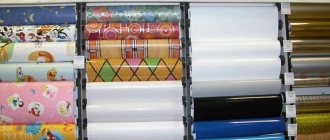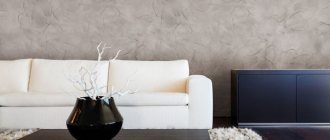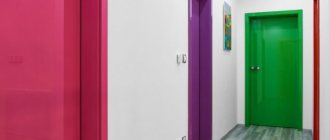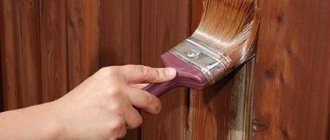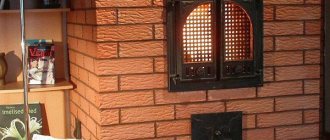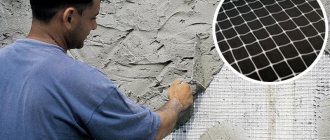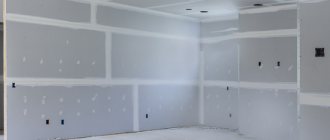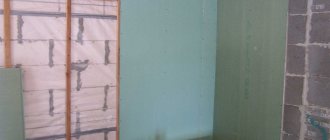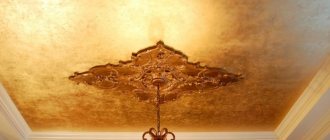Finishing a house from SIP panels
Content
What should the materials be like?
- Facade plaster.
- Paint and its application.
- Features of using clinker tiles.
- Application of ventilated facades.
- Facade panels.
- Decorative rock.
- Decoration with clapboard or siding.
- Stylish combined finish.
In private low-rise construction, when building houses using frame technology, SIP panels . They are made from a pair of OSB boards and polystyrene foam placed between them, which acts as insulation. The panels are in great demand because they are endowed with numerous advantages:
- light weight, facilitating transportation and use of the material;
- minimal thermal conductivity, eliminating the need for mandatory insulation of the building;
- low vapor permeability, providing a comfortable microclimate inside;
- strength, allowing the construction of buildings of several floors;
- fire resistance and self-extinguishing ability, indicating proper fire safety parameters;
- environmental friendliness, excluding the release of substances harmful to humans and nature into the environment;
- acceptable price.
We have listed the main characteristics that require your attention. They provide SIP panels with wide distribution and justify their use in the construction of private houses. Then all that remains is to deal with the exterior decoration of the house from SIP panels, because they do not have the proper aesthetics and must be additionally decorated.
Painting SIP panels
Another finishing option is to paint the walls of the building. This method is inexpensive, so it is usually used for outbuildings rather than private houses. The staining procedure is divided into stages:
- preparing the surface, for which the cracks are puttied, the joints between the panels are leveled, and other defects of the base are eliminated;
- coating the walls with a primer that increases adhesion and protects the panels from moisture;
- painting the surface, and paint is applied in two layers;
- the process can be performed with brushes, a roller or a spray gun;
- The most common choice is a roller equipped with a long handle, so you don’t have to use scaffolding during work
Attention! The second layer is applied only after the previous one has dried.
Requirements for finishing materials
Unlike buildings made of aerated concrete blocks, frame structures are not so demanding on the technical characteristics of the finishing material. Their walls are already endowed with good insulating abilities, so they do not require additional noise or heat insulation.
Due to this feature, the breadth of your options increases significantly, allowing you to choose a finish that suits your personal requirements. There are practically no restrictions; you can use any materials designed for decorating the facade.
Recommendations from professionals
In order for the cladding of a country cottage built from SIP panels to last for the maximum period, when performing finishing work yourself, it is recommended to adhere to the following expert advice:
- Before finishing the building, it is necessary to accurately measure the thickness of the walls. It may not be necessary to install an additional thermal insulation layer when using masonry or siding;
- Finishing of facades from SIP panels must be carried out after the construction of the building in the first 6 months;
- In order not to subsequently damage the finishing, it is recommended to plan the laying of communications and the arrangement of the ventilation system in advance;
- Also, for the decorative design of window and door units, you can use modern finishing elements, for example, plastic slopes and platbands. They are very easy to use as they do not require additional adjustment.
Exterior finishing of a house made of SIP panels with plaster
The simplest and most economical way to decorate. It's easy to do it yourself. There is a wide range of plaster mixtures on the market, so you only need to choose a composition that meets the requirements regarding cost, technical characteristics, and aesthetics of the finished result. As for the latter, decorative plasters are offered in a large selection of textures, which is why they differ in appearance. If we talk about the composition, the following categories of mixtures are distinguished:
- acrylic. Includes acrylic, epoxy resins, polyurethane components. Characterized by plasticity, resistant to humidity and ultraviolet rays;
- polymer. They are not inferior to the previous ones in terms of performance characteristics and are considered one of the most popular;
- mineral. They are based on cement, are affordable and easy to use;
- silicone. Very elastic, easy to care for, have a glossy surface, and do not accumulate dirt;
- silicate. Have not received significant distribution. Somewhat reminiscent of liquid glass.
You can even work with plaster yourself. Manufacturers describe the method of preparing the solution in detail on the packaging. You just need to stir the dry mixture with the specified amount of water so that there are no lumps, apply to the prepared surface, carefully leveling. To achieve better adhesion to the walls, a reinforcing metal mesh is used, on top of which a plaster solution is applied.
Plaster is one of the best options for exterior finishing of a house made from SIP panels. It is cheap, quick to apply, and quite attractive from an aesthetic point of view. If you wish, you can combine compositions of several colors.
Methods for finishing OSB facades
OSB boards, which are made by pressing wood chips, are not the easiest material for facade finishing. The chips in the two outer layers of the board are perpendicular to the chips in the inner layer, and although all layers are impregnated with glue, OSB is considered a material that is not resistant to weathering and ultraviolet radiation.
But, despite the fact that the debate on the topic “is it possible to make external cladding of a house from OSB” still does not cease, many FORUMHOUSE participants believe that “this game is worth the candle”: in terms of speed, ease of installation, and especially - low cost of such a facade.
And, as practice has shown, if moisture-resistant OSB-3 (or OSB-4) is used for facade work, then all the horror stories about “swelling” are completely refuted by time. Under one condition - that such a facade will be closed (“protected”) from the effects of external unfavorable conditions as quickly as possible.
BirdofpreyForumHouse Member
If you want to throw away money, then you can use OSB as a finish, and a complete one at that.
OSB is a moisture-resistant material, that is, it tolerates high air humidity without changing its physical and mechanical properties. But, like any material made from untreated wood, it absorbs water when directly exposed. Such a facade should be closed in the very near future, says our expert, head of the SOPPKA project, Artem Vladimirovich Solovyov.
Artem Vladimirovich SolovyovHead of the SOPPKA project
Having extensive experience, high-quality feedback from our clients, as well as recommendations from OSB manufacturing plants, we can say with confidence that leaving the slab outdoors for more than 1-2 months will have the most negative impact on it.
How long a slab can remain outdoors without protection or finishing without losing its performance depends on weather conditions, but with regular interaction with water it will inevitably change its physical and mechanical properties. Also, the slab is exposed to ultraviolet radiation; under the sun it darkens, the binding resins burn out, and the top layer of wood chips begins to peel off.
Soloviev Artem Vladimirovich
We do not recommend leaving OSB unprotected over the winter. If the stove has been used in atmospheric conditions for more than a year, it must be restored because:
- the destruction of the top layer of the slab began;
- The stove, due to moisture, may be affected by fungus.
OSB consists of 90% wood, so for finishing the facade made of OSB or SIP panels, you can use the same materials as for wooden house construction.
The most popular finishing options for such facades include:
- siding;
- fake diamond;
- clinker tiles;
- ceramic tiles imitating brick;
- decorative plaster;
- painting.
Facade paint
Exterior finishing of a house made of SIP panels with facade paint
Painting the facade has not become as widespread as the previous decoration method, but it also has its place. There is a large selection of facade paints on the market; it will be easy to decide on the best product. Pay special attention to the composition and classification of the product. Based on the type of solvent, the following paints are distinguished:
- water based. They last about 12 years, allow you to obtain an attractive surface, and are resistant to atmospheric factors;
- in organic solvents. The scope of their application is limited due to the requirements for temperature conditions and humidity levels.
There is a classification of paints according to the type of binding element. You will be offered:
- acrylic;
- mineral;
- silicate;
- silicone emulsion;
- silicone modified.
Paints are applied with a roller, brush or spray. Usually the walls are covered with several layers, each of which must dry well. This way it is possible to achieve depth of color and durability of the decor.
What paint is suitable for OSB facades?
Painting slabs can be a time-consuming and frustrating task: non-OSB-specific paint and primer can simply roll off the surface. In the professional construction community, OSB painting is literally the stuff of legends. Homeowners are looking for ways to help paint adhere to the slab surface. There are even tips that are harmful and dangerous for OSB.
ForesterForumHouse Member
I recently came across some interesting information on OSB from a European construction company that if you decide to paint it, then before painting you just need to let the façade stand for a year in natural climatic conditions.
We already know that the stove needs to be closed as soon as possible and under no circumstances should it be left over the winter. Also, according to our expert, there is no need to sand the new slab before painting. If you use facade finishing paints specially developed for OSB, you will not need to putty the surface and use fiberglass mesh. Our experts recommend using facade paint for OSB, then, ultimately, we will get a perfectly decorated surface at low cost, as well as fire and bioprotection.
But OSB is still very different in structure from ordinary wood. You need to accept that not every wood paint will work well on a slab. Let's look at examples of painted OSB facades from FORUMHOUSE participants.
Here is the facade of the house of a FORUMHOUSE member with the nickname mikhalich (solid primer + one layer of rubber paint).
A member of our portal with the nickname snosikov primed the facade and applied two layers of acrylic paint to it. Here is the result.
And this is the house and stable of a FORUMHOUSE member with the nickname Boryan, painted with water-based paint.
Boryan
I painted the house with water-based emulsion and applied the paint normally to the OSB with a fur roller. Water-based paints sometimes pick up a couple of poorly glued shavings on the panel, then we stupidly tear them off, paint over the area, and in the end everything is OK.
Urgenz painted the facade with a specially developed facade paint, without primer, in two layers.
After a year and a half, the paint job looks flawless.
OSB facade for painting
Before painting, the surface of the slab must be cleaned of dust deposits, dirt, and old peeling paint.
Soloviev Artem Vladimirovich
Sanding is not used for OSB. Local sanding of the surface is possible in case of chips peeling off.
If the slab has already been painted before, you need to scrape off all flaking paint, then sand it and remove dust from the surface. It is recommended to prime the prepared surface with a special primer - this will significantly reduce paint consumption and improve adhesion.
Sister KerryForumHouse Member
OSB does not absorb moisture so easily; the latter simply drains from it. I tried priming with acrylic primer. I had to lay the sheet horizontally and move it back and forth with a brush until the surface swelled a little and began to absorb, somehow lingering on the stove.
According to our expert, this problem is solved by using a specialized primer.
Soloviev Artem Vladimirovich
When using a primer that is not specialized for OSB, it is really difficult to achieve high-quality adhesion.
If the facade was previously painted with oil paint, then you need to treat all surfaces with a brush (this will improve the adhesion of the surface to the new paintwork) and cover them with primer directly over the old paint.
For additional protection of OSB, only special protective compounds are used that take into account the density and structure of oriented strand boards.
Soloviev Artem Vladimirovich
The surface of OSB is significantly different from the surface of wood: wood is porous and has high absorbency. Impregnations for ordinary wood are not absorbed into OSB, but simply flow off or evaporate, leaving the board unprotected. For real protection it is necessary to use covering compounds.
FORUMHOUSE participants prefer to preserve the original OSB structure, so in most cases they do without putty.
UrgenzFORUMHOUSE Member
I didn’t putty, I left the OSB structure, it’s more beautiful (more like the original clay half-timbered structure and looks much better than a smooth sheet). For more than a year, no changes have occurred with the OSB, nothing has swelled.
Clinker tiles
Exterior finishing of a house from SIP panels with clinker tiles has significant advantages over other finishing methods, which is why it is in demand. Worth special attention:
- stylish look;
- wide choice of colors;
- durability;
- frost resistance;
- low porosity;
- moisture resistance;
- ease of installation.
Clinker is laid on cement mortar or special glue, like ordinary ceramic tiles. In the same way, plastic crosses are installed between the elements to obtain identical seams. To achieve a more attractive finish, several colors of clinker tiles are often combined and laid out in some kind of pattern.
What materials are used?
There are different types of exterior decoration, differing in the material used. Each variety has both pros and cons. The materials differ in appearance, composition and method of fastening.
Siding
This material is considered popular among building owners as it is strong, beautiful and durable. It is presented in the form of narrow and oblong panels, installed horizontally or vertically. Houses of any size and shape are covered with siding. You can choose the following types of material:
- Metal. To create the panels, galvanized steel is used, on which the outside is coated with polymers. The result is a coating that is resistant to various external influences. The disadvantage of metal material is that mechanical shocks cause dents, which cannot be repaired.
- Vinyl. Plastic panels are attractive and resilient, so after an impact they easily restore their original shape. The disadvantages include brittleness at low temperatures and a high coefficient of thermal expansion.
- Wood. It is rarely used for exterior cladding of a house, as it requires constant protection through the use of special impregnations.
All panels are available in different colors and shapes. The profile can be represented by a log, timber or herringbone. When purchasing siding, additional materials are included in the kit to simplify the installation process. These materials include finishing and starting strips, soffits, trims, gutters, etc.
Attention! A significant advantage of siding is its effective protection against high humidity, and installation is easy to do yourself.
Facade panels
They are otherwise called “basement siding”, but differ from siding in size and appearance. They have a rectangular shape, and the texture imitates brick or stone masonry.
This material produces a stylish and beautiful finish. The installation technology is similar to the process of installing siding, so any home owner can handle it on their own.
Plaster
A coating made of this material provides good protection for the home from various influences. By choosing modern and high-quality compositions, a stylish finish is achieved.
You can buy mineral, silicate, silicone or acrylic plaster. Each composition has pros and cons, but a solution is selected that is not destroyed by moisture. Therefore, for a house made of SIP panels, a silicone composition is chosen, which is an elastic material with good water-repellent characteristics.
The surface shape of the plaster can be smooth or Venetian, and it can also contain flock or stone chips. The surface type is presented in the following types: bark beetle, fur coat or lamb. These types differ in their creation technology, so they do not affect the coating parameters. If the house is large, then even the thinnest layer of plaster significantly increases the load on the foundation. During the installation process, reinforcing stacks are used to ensure strong adhesion to the base.
Attention! Plaster can be applied not only to walls, but also to insulation.
Fiber cement panels
With their help, a reliable coating is formed that can easily cope with external influences. The panels are long slats made from concrete to which plant fibers called fiber are added.
The downside of the cladding is its significant thickness, exceeding 1 cm. The covering has significant weight, so it is only suitable for houses with a strong foundation. Another disadvantage is the high cost of the material. But the coating does not fade over time and is durable.
Clinker tiles
It is created using clay that has been fired at high temperatures. Therefore, the result is a durable material that is resistant to moisture. Hauberg tiles can be used to decorate any building, and you don’t have to spend a lot of money on finishing.
But even a tile coating has a significant weight, which is not always suitable for a structure made of SIP panels. Therefore, the material is often used exclusively for the lower tier.
Bloch house
It is represented by wood panels with a convex shape. Bloch house is a type of lining. It contains no harmful components, and is also coated with antiseptics and fire retardants that protect against insects, moisture, fire and microorganisms. But over time, wood still ages and warps. Operation must be careful so that the house does not catch fire.
The sheathing has significant weight, so a correct calculation is required first.
Plywood for half-timbering
This option is ideal for a house made of SIP panels, since the coating does not have significant weight. The facade is initially sheathed with plywood, after which planed boards are installed, similar in appearance to wooden beams. All parts of the coating are painted in different colors.
Attention! When painting the coating, only paints intended for external use are used.
Ventilated facade
Ventilated facades have gained great popularity today. Their essence is to install a metal profile on the walls, on which the finishing material will then be fixed. The latter is used porcelain stoneware, lining, siding, house block, etc. Slabs or boards are secured with self-tapping screws, their caps are closed with plugs for greater aesthetics.
The advantage of a ventilated facade is its enviable energy-saving properties. Due to the air cushion formed inside the house, heat or coolness is perfectly retained, which allows you to save on heating and air conditioning.
Exterior decoration of a house from SIP panels using facade panels
This is a broad category that includes a variety of decor. Specialized stores and companies will offer the following facade panels:
- composite;
- thermal panels;
- vinyl;
- ceramic;
- polymer;
- with decorative coating;
- with an admixture of glass;
- metal, etc.
When determining your priorities, take into account the cost of the product, general appearance, weight, level of installation complexity, warranty period and other criteria that play an important role.
Typically, facade panels are installed on ventilated facades. But given that we are talking about cladding a house from SIP boards, it is possible to use conventional wall mounting using a special adhesive solution.
Exterior decoration of a house made of SIP panels with decorative stone
Main characteristics of sip panels
For the production of sip panels, no waste from the woodworking industry is used, but only high-quality natural materials - selected wood chips. Health-friendly polystyrene foam is used as insulation, which is widely used not only for construction, but also in the production of furniture and children's toys. This implies, perhaps, the main property of panels when used for interior decoration - environmental friendliness.
The following features and qualities of the material are highlighted:
- Moisture resistance, which is achieved through the use of internal binder and external finishing of sip slabs;
- The fire safety of sip panels is associated with the introduction of special flame retardant components into the insulation layer, due to which polystyrene foam acquires self-extinguishing properties when exposed to fire, and also does not emit toxic substances;
- Strength is obtained due to production technology;
- Ease of assembly - during construction, the panels are connected to each other using the tongue-and-groove principle and this does not require expensive special equipment;
- Democratic price.
Stone cladding
Decorating the facade with natural stone is expensive, but beautiful. For cladding, you can use many types of it, choosing an option that meets your personal wishes regarding cost, aesthetic appeal, and performance characteristics. You need to choose carefully. Some types of stone are characterized by fragility, heavy weight, and other nuances that do not allow them to be used as decoration. Of course, finishing can be done with them, but it will not be endowed with the desired qualities.
Artificial stone cladding is more common today . It has significant advantages over its natural analogue:
- reasonable price;
- strength and durability;
- perfect appearance, no foreign inclusions;
- resistance to high humidity;
- UV resistance;
- simplified installation;
- light weight;
- frost resistance.
You can choose artificial stone in any design; manufacturers offer it in a wide range of colors and textures.
Lining and siding
Exterior decoration of a house made of SIP panels with siding
If you want to create a cozy and comfortable home, think about finishing with natural wood. It is characterized by environmental safety and looks very advantageous and attractive. There is no need to worry about durability. All elements are coated with modern protective impregnations and varnishes such as Pinotex , protecting them from any negative factors. All you have to do is calculate the volume of decor, purchase lining, familiarize yourself with the intricacies and stages of finishing work. The installation process is quick and easy, there will be no difficulties. The lining is mounted on a metal frame assembled from profiles. The fasteners remain invisible thanks to the special technology for connecting the boards.
Lining and block house: natural wood
How are houses decorated to make them look like cottages made of natural timber? For such purposes, lining with clapboard and block house is carried out. The materials are fixed directly to the SIP panel without profile systems. Lining and block house guarantee:
- aesthetic appearance of the house;
- favorable microclimate due to vapor permeability of materials;
- protection from external factors.
However, these materials have two disadvantages. Natural wood does not tolerate high humidity and temperature changes, so it can deteriorate. The coating will require serious care. In addition, both lining and block house are expensive materials. Class A lining will cost more than brick, stone or clinker.
The service life of external wooden finishing is questionable - it all depends on the climatic characteristics of the area.
Combined finishing
Looking through photos of the exterior decoration of houses made from SIP panels, you will notice that combined decor is trending. This is a combination of several materials that allows you to make the building even more unusual and unique. The following combination methods are offered to you:
- selective. You can place the decor over the entire surface of the walls, in a free order, without being tied to any landmarks. For example, the main finishing is done with plaster, the foundation is decorated with clinker or stone, the same material is placed in some areas of the walls or on the corners. The result is a nice look;
- floor division. For example, each floor is finished with different coatings or the interfloor space and other structural elements of the house are allocated. Such ideas are common due to the originality and decent appearance of the decoration result.
You choose the decor combination yourself. Plaster looks good with stone or tiles, wood paneling or brick. Here you decide for yourself, guided by the chosen idea.
Having trouble making a decision? Consult with specialists, look at examples of finished work. Estimate the budget and time required to decorate the facade in a particular case. This way you will decide faster.
Exterior decoration of a house from SIP panels
